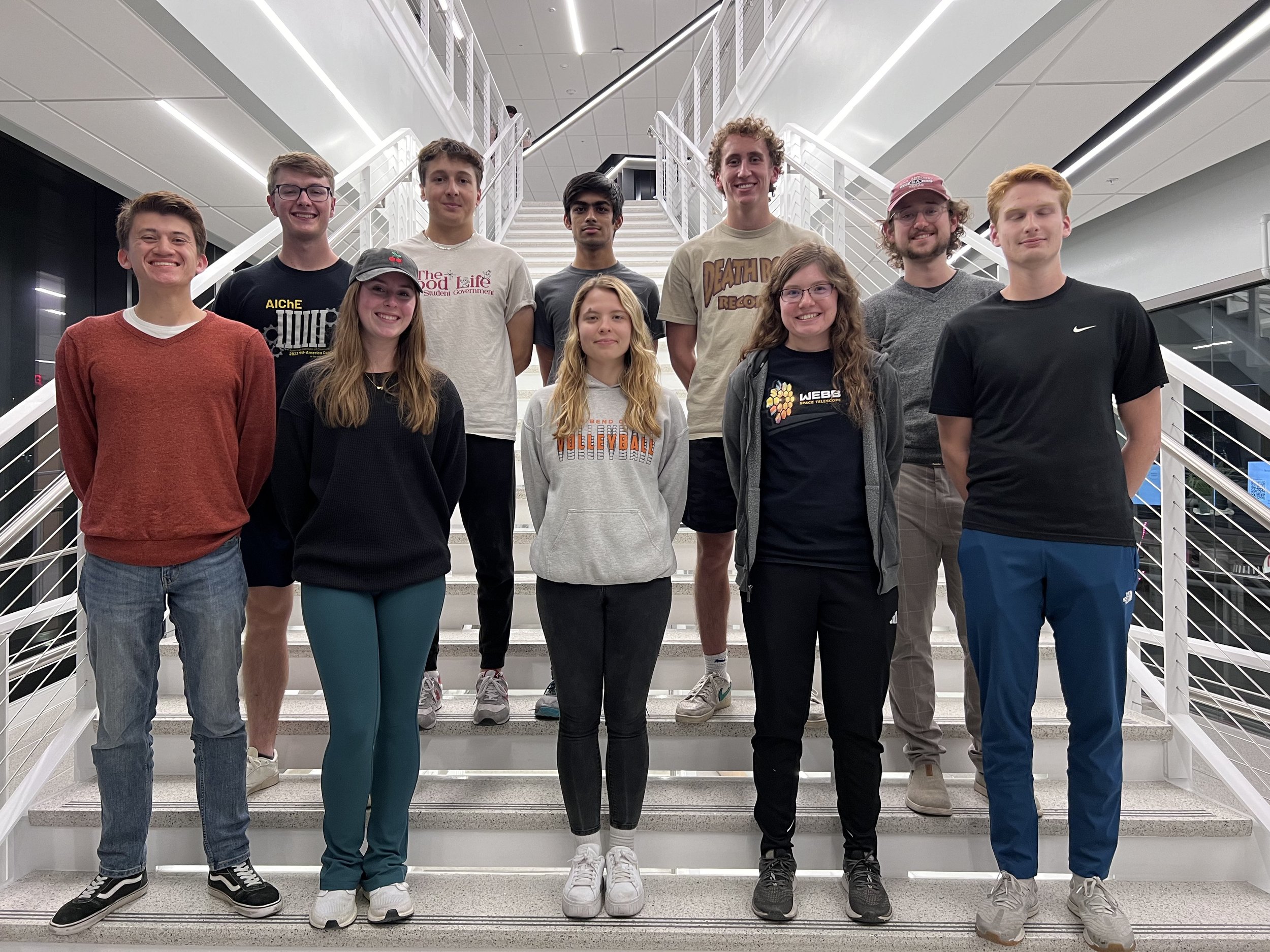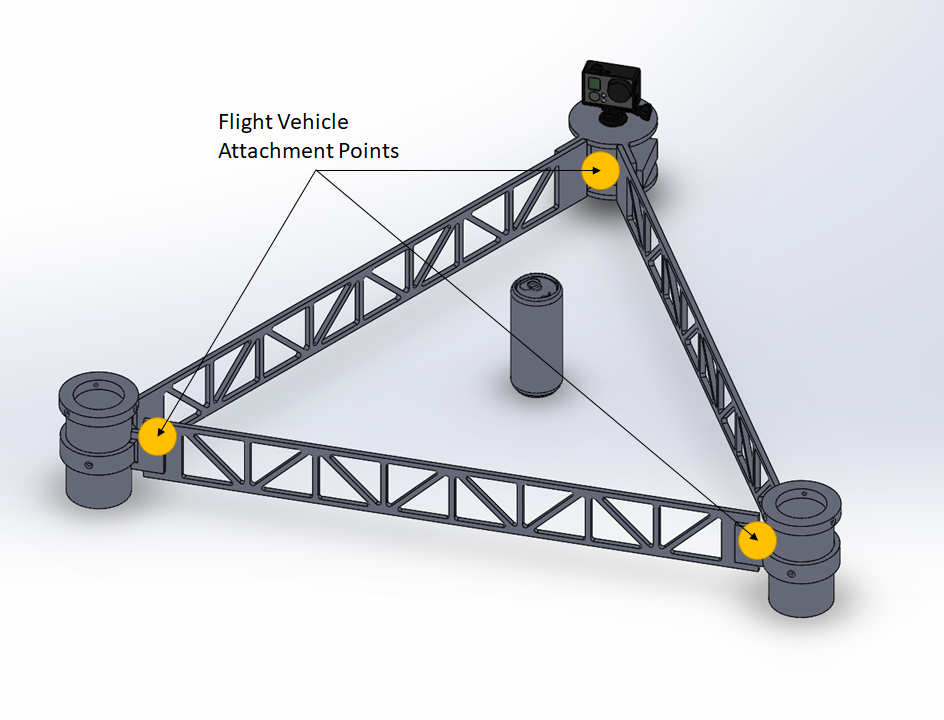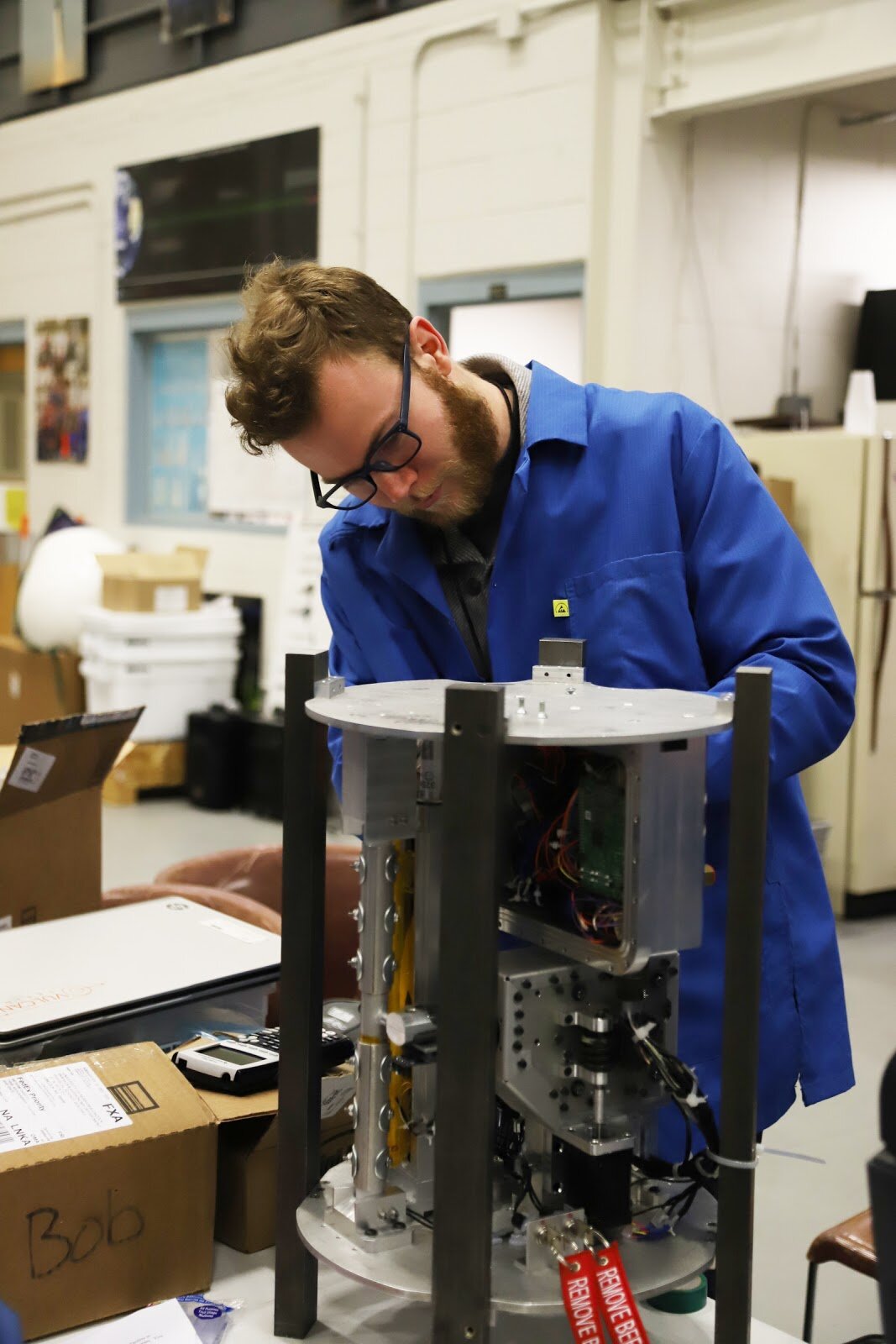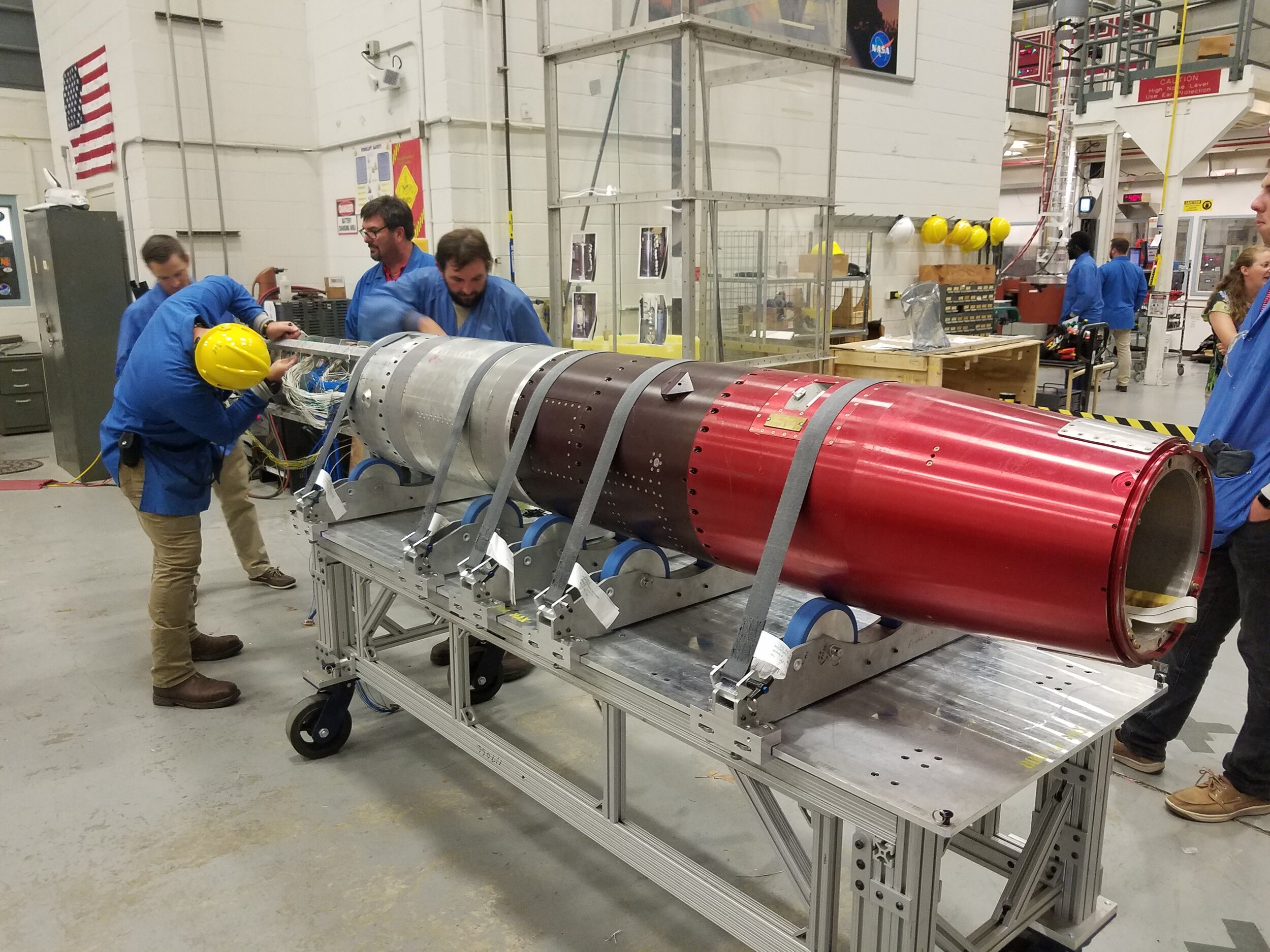

UNL AXP
UNL AXP
The Aerospace eXperimental Payloads (AXP) team is a group of students of many different majors. Formally known as the USIP and ROCKSAT-X team, our team has a history of applying for and taking place in competitive grants from NASA. The most recent of which is the 2021 RockOn and the 2021 NASA CubeSat Launch Initiative (CSLI).
In April 2021 AXP partnering with the Big Red Satellite Team was awarded Nebraska’s first NASA CSLI grant. For this grant, we are building a 10 x 10 x 13 cm cube-shaped satellite. Our satellite will be researching a new type of solar panel that has only been tested in space a few times. Our hand-off date for the grant is currently planned for May 2023.
AXP 2023 Team Photo
Projects
Projects
2020-2021 Outline
The main project for the spring 2021 semester is a high altitude balloon (HAB) launching in late April. There will be six cansats deployed in this semester’s design each testing different payloads.
Payloads 1 through 3 are being designed with the help of the Big Red Satellite team composed of middle and high schoolers from eastern Nebraska.
CanSat 1
Our experiment will measure radiation and heat to find out what altitudes will cook certain foods without a dangerous amount of radiation. The reason for this experiment is because we want to measure radiation in the atmosphere and represent it in a fun way. We will learn about types of radiation and how they vary at different levels in the atmosphere.
CanSat 2
In the environment the HAB provides us, we plan to test the effects of radiation on the intensity of the Foxfire mushrooms’ (Panellus Stipticus) bioluminescence. Along with the Foxfire’s, we plan on testing the ability of Mycelium to block and absorb radiation. And finally, we plan to build and test the efficiency of Perovskite solar cells.
CanSat 3
We are testing how our sensors react at a higher altitude, specifically radiation sensors and using silicon cells (if possible). This will allow us to know more clearly what will happen on the cubesat. We will be using a nanosat to achieve this.
CanSat 4
The goal of the mission is to measure a change in the absorption of blue light in chicken embryonic cells as well as measure the change in strength of Earth’s magnetic field with altitude.
CanSat 5
This payload will have two XBee devices: one onboard the CanSat and one at a ground station. These two XBee devices will demonstrate wireless communication between the payload and the ground station. They will send pictures captured through a Raspberry Pi Camera.
CanSat 6
This payload will mainly focus on the Globalstar Simplex satellite communications modem, with the goal of gaining familiarity with the system for use in cubesat applications. Data from onboard atmospheric sensors will be transmitted live to the ground via the Globalstar network. The data collected will be used to recreate the flight path and external conditions, and will serve as a backup and additional data for the experiments on the other payloads.
UPCOMING EVENTS
AXP General Meetings Fall 2022: Mondays 6:30-8:30pm, NH-W127
Nebraska Big Red Satellite General Meetings: Saturdays 10:00am-12:00pm, NH-W127
MEMBERS
2022-2023 TEAM LEADS
John Helzer
Joel Murch-Shafer
Hailey Anderson
Alyssa Simpson










